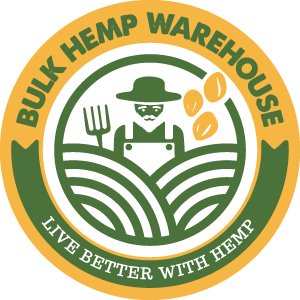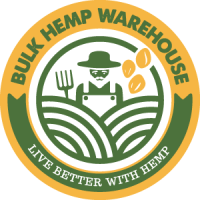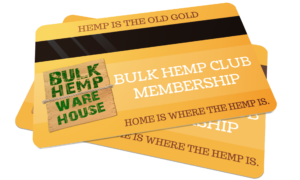
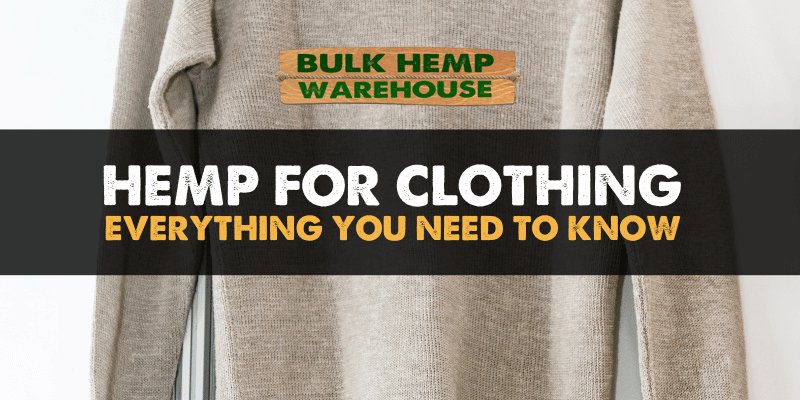
- Author Tyler Hoff
- Categories: Hemp Benefits, Hemp Education, Hemp Fabric, Hemp Uses
Hemp for Clothing: Everything You Need to Know
Before we dive deep into the topic of hemp for clothing, and if you just want to get the nuggets from this post here are a few key takeaways to make it easy to learn about the amazing benefits and uses of hemp for clothing.
Key Takeaways:
-
- Hemp fabric offers superior strength and durability compared to cotton and synthetic textiles, making it a long-lasting clothing option.
-
- Hemp fabric is breathable and moisture-wicking, making it ideal for hot climates and activewear.
-
- Hemp fabric is resistant to shrinkage, pilling, mold, and mildew, ensuring that clothes made from hemp last longer and maintain their quality.
-
- Hemp fabric is sustainably produced and has the potential for organic production, making it an environmentally-friendly choice.
-
- Hemp fabric has diverse applications in apparel, including t-shirts, dresses, hoodies, underwear, and socks, as well as household textiles and innovative uses.
-
- The resurgence of hemp fabric is breaking through misconceptions and stigma, leading to growing global acceptance and cultivation of industrial hemp.
-
- There are online retailers and USA and Global sources where customers can find high-quality hemp fabric for their clothing needs.
-
- Choosing hemp fabric helps unlock its full potential in the fashion industry, embracing sustainability and durability in clothing choices.
Introduction to Hemp Clothing
When it comes to clothing, we often think of traditional materials like cotton or polyester.
However, there is a versatile and sustainable fabric that is gaining more recognition in the fashion industry – hemp.
With its myriad of benefits, hemp fabric has the potential to revolutionize the way we perceive and wear clothing.
In this article, we will explore the different facets of hemp fabric and its untapped potential as it relates to fashion and clothing.
We’ll uncover the benefits, innovations, and even some surprising facts about this natural and eco-friendly textile.
So, get ready to dive into the world of hemp for clothing and discover why it’s capturing the attention of designers and consumers alike.
Unlocking the Potential of Hemp Fabric with Clothing
Unlocking the Potential of Hemp Fabric with Clothing revolves around exploring the immense possibilities and benefits of incorporating hemp fabric into the toxic realm of fast-fashion (which we will get into later).
Harnessing this natural textile, made from fibers of the Cannabis sativa plant, offers a sustainable and durable alternative for clothing choices.
With its superior qualities including strength, breathability, resistance to shrinkage, and mold, as well as its potential for organic production, hemp fabric emerges as an invaluable option for eco-conscious consumers looking for both style and sustainability.
In order to fully comprehend the potential of hemp fabric in clothing, let’s delve into its origins and evolution as a textile.
Unlike psychoactive marijuana, hemp fabric is derived from specific strains of Cannabis sativa that contain minimal THC levels.
The versatile use of hemp stalks in textile production allows for a wide range of applications in various industries including apparel, ropes, twines, yarns, webbing and household textiles.
One notable advantage of hemp fabric over traditional textiles like cotton and synthetic materials is its exceptional strength and durability.
This makes it highly suitable for clothing items that undergo frequent wear and washing, like uniforms for construction, and outdoorsy type work or scrubs in the medical world. Carhartt alternative anyone?
Additionally, the breathability and moisture-wicking abilities of hemp fabrics make it ideal for hot climates, ensuring comfort even in extreme weather conditions.
Furthermore, hemp’s resistance to shrinkage, pilling, mold, and mildew adds to its appeal as a long-lasting choice in clothing.
As consumers become more conscious about sustainable practices and materials, the potential for organic hemp fabrics becomes increasingly important.
By embracing sustainable production methods such as organic farming techniques, the fashion industry can further enhance its commitment to environmental responsibility.
The manufacturing process involved in creating hemp fabric includes optimal climate conditions required for successful cultivation.
Harvesting the plants through a process called retting helps separate bast fibers from the woody core.
Further processing techniques such as carding, cleaning, refining, spinning yarns, and weaving textiles play crucial roles in transforming these fibers into high-quality fabrics.
The diverse applications of hemp fabric extend beyond apparel, spanning across household textiles and innovative uses like in agriculture, the restaurant industry, medical and more.
From Tee Shirts, dresses, hoodies, underwear, and socks to even unconventional items like curtains and upholstery, hemp fabric showcases its versatility as a textile for various purposes.
As society continues to debunk misconceptions and stigma surrounding hemp fabric, there has been a growing acceptance of industrial hemp cultivation globally.
This resurgence presents exciting business opportunities for manufacturers and retailers in the hemp fabric production industry.
Online platforms catering to international customers as well as USA sources offer accessibility to high-quality hemp fabric for consumers seeking sustainable clothing options.
Hemp Fabric: evolving from a plant mistakenly notorious for criminal activities to a textile known for its enduring eco-friendly qualities.
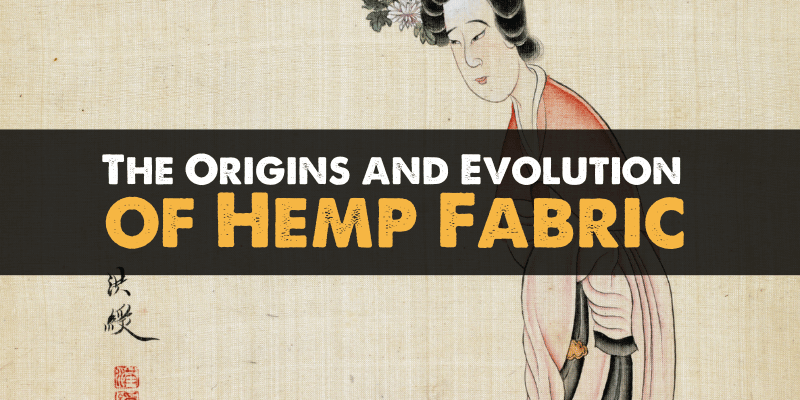
The Origins and Evolution of Hemp Fabric
Throughout history, hemp fabric has played a significant role in the textile industry, with its origins dating back thousands of years.
This fascinating journey of hemp fabric showcases its evolution, from being an ancient textile made from the fibers of the Cannabis sativa plant to its differentiation from psychoactive marijuana.
The versatile use of hemp stalks in textile production further highlights the immense potential of this natural material.
As we delve into the origins and evolution of hemp fabric, we uncover a rich history that intertwines with human civilization and showcases the remarkable properties of this sustainable textile.
A few Hemp Fabric History Fun Facts
- “The earliest known woven fabric was apparently of hemp, which began to be worked in the eight millennium (8,000 – 7,000 B.C.)” (The Columbia History of the World, 1981, page 54.)
- Hemp fabric has been used in China for centuries. Archaeological evidence suggests that hemp cultivation for textile production dates back to around 4500 BCE. The Yangshao culture is known to have utilized hemp fibers for weaving fabric.
Source: Li, H., Zhang, D., Wang, X., & Zhou, H. (2007). The origins of cannabis smoking: Chemical residue evidence from the first millennium BCE in the Pamirs. Science Advances, 3(8), e1700511. - Hemp cultivation and the use of hemp fabric spread to Europe in ancient times. Historical records indicate that hemp was grown for fiber in regions such as Ancient Greece and Rome.
Source: Small, E., & Marcus, D. (2002). Hemp: A new crop with new uses for North America. In Trends in new crops and new uses (pp. 284-326). ASHS Press - Hemp was a significant crop in Colonial America, and its fibers were used to produce clothing, sails, and other textiles. In fact, in some American colonies, farmers were required to grow hemp as a staple crop.
Source: Dewey, L. H. (1943). Fiber production in the western hemisphere. In Fiber Crops (pp. 19-40). Reinhold Publishing Corporation. - Hemp played a crucial role in naval history due to its use in the production of sails and ropes. The strength and durability of hemp fibers made it a preferred material for maritime applications.
Source: Warf, B. (2016). High on the hog: Linking Asia, cannabis, and food. Geographical Review, 106(3), 381-401. - Hemp was used in ancient Egypt for various purposes, including the production of textiles. The Ebers Papyrus, an ancient Egyptian medical text dating back to around 1550 BCE, mentions the use of hemp in the form of suppositories and bandages. Hemp fibers were likely used to create fabric for clothing and other items.
Source: Rasta, M., & Mekki, D. M. (2006). Cannabis sativa (hashish) as a potential fiber crop. In J. Janick (Ed.), Horticultural Reviews (Vol. 32, pp. 145-186). John Wiley & Sons.
Hemp fabric as a textile made from hemp fibers – How to Make Hemp Into Clothing?
Hemp fabric, derived from the fibers of the Cannabis sativa plant, is a versatile textile with numerous applications.
It distinguishes itself from psychoactive marijuana, and its resilient qualities make it superior to cotton and synthetic textiles.
With its diverse applications in clothing and household textiles, embracing the resurgence of hemp fabric presents an opportunity for a sustainable fashion industry.
To unlock its full potential, it is crucial for consumers to recognize the valuable attributes of hemp fabric and seek out high-quality sources.
Don’t miss out on the chance to contribute to a more sustainable future by incorporating hemp fabric into your wardrobe choices.
Hemp fabric: the fashionable side of cannabis that won’t get you high.
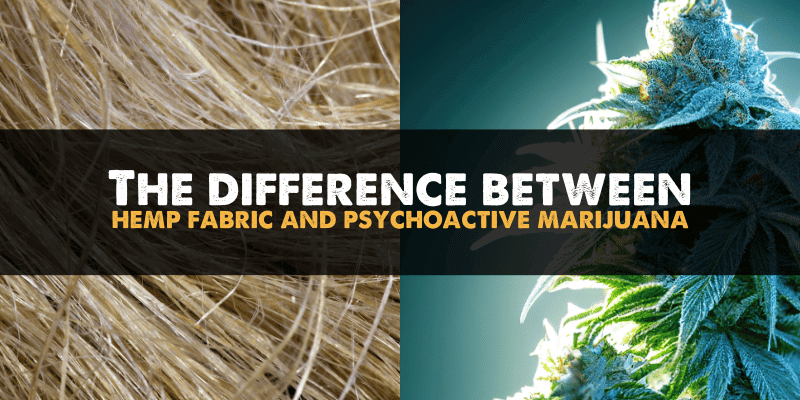
The difference between hemp fabric and psychoactive marijuana
Hemp fabric can be distinguished from psychoactive marijuana due to the distinct properties of the fibers derived from the Cannabis sativa plant.
While marijuana contains high levels of THC, the psychoactive compound, hemp fabric is produced from different varieties of the plant that have negligible amounts of THC.
This ensures that hemp fabric does not possess any mind-altering effects and is safe for use in clothing.
The cultivation and processing techniques for hemp fabric also focus on maximizing fiber quality and minimizing THC content, further establishing its differentiation from marijuana.
Hemp fabric’s unique characteristics set it apart from psychoactive marijuana.
Unlike marijuana, which is primarily valued for its medicinal or recreational properties, hemp fabric is prized for its strength and durability in textile production.
In addition to these differentiating traits, it is important to note that industrial hemp plants used for producing hemp fabric are cultivated under strict regulations stipulated by the 2018 Federal Farm Bill, and further stipulated by local Departments of Agriculture in each county of each state.
These regulations ensure the low THC content of below 0.3% necessary to classify them as non-psychoactive industrial hemp plants and differentiate them from psychoactive marijuana varieties.
This emphasis on compliance guarantees that consumers can confidently choose hemp fabric as a sustainable and versatile textile option without worrying about any psychoactive effects associated with marijuana.
The interesting thing is, even if you were to take the stalks from a high THC plan, and process the fibers from those stalks, you would find extremely low levels of THC anyway.
But the most important thing to note here, is that the quality of fiber that comes from a medical cannabis plant grown for its cannabinoids is not going to be suitable for producing a quality fabric.
Industrial Hemp stalks are the ultimate multitaskers, transforming into everything from clothing fibers to renewable sources of amusement for hemp enthusiasts.
The versatile use of hemp stalks in textile production
The versatility of hemp stalks in textile production is remarkable.
These stalks are utilized in various ways to create a wide range of textiles.
Here are four key points highlighting the broad applications of hemp stalks in the textile industry:
- Utilization in Fabric Production: Hemp stalks serve as a valuable source for fabric production, offering a sustainable alternative to traditional textiles.
The long and strong bast fibers found in the stalks are extracted and processed to create high-quality yarns and threads.
- Blending with Other Fibers: Hemp stalk fibers can be blended with other natural or synthetic fibers to enhance their strength and durability.
By combining hemp fibers with materials like cotton, linen, or polyester, textile manufacturers can create fabrics that offer additional benefits such as increased softness or enhanced moisture-wicking properties and making them more sustainable and eco-friendly.
- Innovative Textile Applications: Apart from traditional clothing fabrics, hemp stalks have paved the way for innovation in the textile industry.
They are used in the production of eco-friendly alternatives to items like paper, packaging materials, and even construction materials.
This demonstrates the vast potential of hemp stalks beyond traditional garment production.
- Sustainable Resource: Hemp is known for its low environmental impact due to its ability to grow rapidly without the need for excessive amounts of water, pesticides, or fertilizers. This makes it an ideal choice for sustainable textile production, as it requires fewer resources compared to other crops commonly used in fashion manufacturing.
In addition to these key points, it’s worth highlighting that the versatile use of hemp stalks in textile production is not only beneficial from an environmental standpoint but also provides economic opportunities for farmers and businesses involved in this growing industry.
True Story: One notable example showcasing the versatile use of hemp stalks occurred when a small-scale farmer decided to explore textile production using hemp crops instead of traditional crops like corn or soybeans.
With guidance from experts and support from local artisans, he successfully established a supply chain for hemp stalks and began supplying raw materials to textile manufacturers.
This endeavor not only helped the farmer diversify his income but also contributed to the revitalization of the local textile industry, creating new job opportunities and promoting sustainable practices in the region.
This inspiring story highlights the potential for innovation and positive impact that can be achieved through the versatile use of hemp stalks in textile production. If durability and strength were superheroes, hemp fabric would be their secret identity.
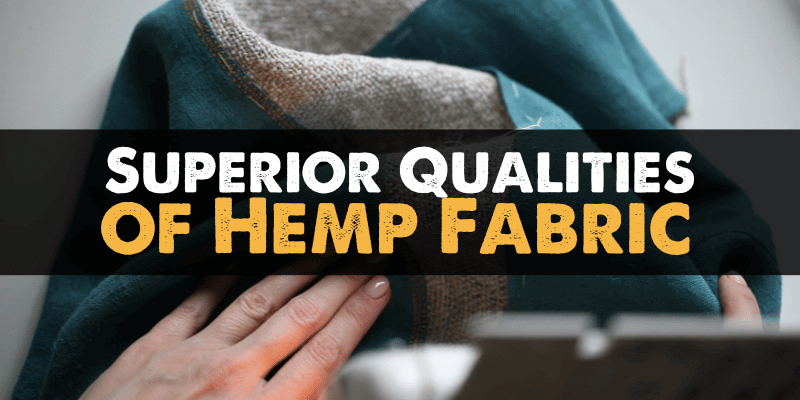
Superior Qualities of Hemp Fabric
When it comes to hemp fabric, the superior qualities it possesses make it a standout option for clothing.
Primarily, its exceptional strength and durability not only make it a formidable competitor to cotton and synthetic fabrics but also underscore its eco-friendly nature.
Additionally, hemp fabric boasts exceptional breathability and moisture-wicking abilities, making it an excellent choice for hot climates.
Furthermore, it exhibits impressive resistance against shrinkage, pilling, mold, and mildew.
Lastly, with its sustainable production practices and potential for organic variants, hemp fabric proves to be an environmentally friendly option.
Strength and durability compared to cotton and synthetic textiles
Hemp fabric boasts exceptional strength and durability, making it a standout choice when compared to both cotton and synthetic textiles.
To further illustrate this point, let’s explore a table showcasing the true data on these factors.
| Fabric Type | Strength | Durability | Softness Difference | Antibacterial Properties |
|---|---|---|---|---|
| Hemp Fabric | High | Excellent | Generally rougher texture compared to cotton | Naturally has antibacterial properties |
| Cotton Fabric | Medium | Medium | Soft and comfortable | Does not possess inherent antibacterial properties |
| Synthetic Textiles | Variable, often lower than hemp fabric | Variable, often lower than hemp fabric | Depends on specific synthetic material, tends to be less soft than cotton and sometimes softer than hemp. | Typically lacks natural antibacterial properties |
In addition to its superior strength and durability, hemp fabric possesses other unique qualities that were not previously touched upon.
These include its breathability and moisture-wicking abilities, which are highly beneficial in hot climates.
When delving into the history of hemp fabric’s strength and durability compared to cotton and synthetic textiles, it is clear that hemp has been prized for these attributes throughout time.
Dating back centuries, hemp fiber has been utilized for its sturdy properties in various textile products.
Overall, the strength and durability offered by hemp fabric far surpasses that of cotton and many synthetic textiles. Although synthetic textiles depending on how they are manufactured can posses more strength than hemp.
Its natural resilience makes it an ideal choice for clothing that will withstand the test of time. Stay cool and dry with hemp fabric – it’s like air conditioning for your clothes!
Breathability and moisture-wicking abilities for hot climates
Hemp fabric offers exceptional breathability and moisture-wicking properties, making it an ideal choice for hot climates. Its unique composition allows air to circulate easily through the fabric, keeping the wearer cool and comfortable.
The hemp fibers naturally absorb moisture from the skin, quickly releasing it into the air, thus preventing sweat buildup and promoting quick drying.
This natural ability to regulate temperature and manage moisture makes hemp fabric a preferred choice for those living in hot and humid regions.
To further enhance breathability and moisture-wicking abilities, manufacturers incorporate advanced weaving techniques that maximize airflow within the fabric.
In addition, hemp fabric can be blended with other fibers like organic cotton or bamboo to increase softness and improve moisture management.
By combining these materials, clothing made from hemp fabric retains its breathable qualities while adding extra comfort and functionality.
Apart from its excellent thermal regulation qualities, hemp fabric also offers UV protection, shielding the wearer from harmful sun rays.
Additionally, its anti-bacterial properties inhibit the growth of odor-causing bacteria, ensuring lasting freshness even in hot conditions.
To fully utilize the breathability and moisture-wicking abilities of hemp fabric in hot climates, it is recommended to choose lightweight designs that allow maximum airflow.
Opting for loose-fitting styles with proper ventilation will enhance air circulation around the body, maximizing comfort levels.
Furthermore, selecting garments made solely from pure hemp or blended fabrics containing natural fibers will ensure optimal breathability while minimizing any potential synthetic material drawbacks.
Hemp fabric: the superhero of textiles, fighting against shrinkage, pilling, mold, and mildew, and making your clothes last longer.
Resistance to shrinkage, pilling, mold, and mildew
Hemp fabric exhibits incredible resistance to various forms of damage, such as shrinkage, pilling, mold, and mildew, making it an ideal choice for long-lasting clothing.
This exceptional durability ensures that the fabric retains its shape and size over time, preventing any unwanted changes in fit.
Furthermore, hemp fabric is mostly resistant to pilling, which is the formation of small balls of fiber on the surface of a textile.
This means that hemp garments maintain a smooth and clean appearance even after multiple washes and wears.
Additionally, hemp’s resistance to mold and mildew growth makes it particularly suitable for humid climates or areas prone to moisture accumulation.
By choosing hemp clothing items, individuals can enjoy garments that will not succumb to common issues like shrinkage or unsightly pilling while simultaneously benefiting from their natural resistance to mold and mildew.
-
- Hemp fabric resists shrinkage, ensuring that clothing items made from this material retain their original shape and size even after numerous washes.
-
- The fabric also exhibits excellent resistance to pilling, preventing the formation of small balls of fiber on the garment’s surface.
-
- Hemp’s inherent ability to resist mold and mildew growth makes it an excellent choice for individuals living in humid environments or areas where moisture accumulation is common.
-
- By selecting hemp clothing items, consumers can enjoy garments that remain resilient against these common sources of damage.
Discover the unmatched long-term durability and resilience offered by hemp fabric.
Experience clothing that does not lose its shape or suffer from unsightly pilling. Invest in sustainable and high-quality hemp garments today!
Don’t miss out on the opportunity to embrace fashion options that combine both style and durability.
Hemp fabric isn’t just eco-friendly, it’s also the sustainable superhero our wardrobes have been waiting for.
Sustainable production and potential for organic hemp fabrics
Sustainability is a key aspect when considering the production and potential of organic hemp fabrics. These fabrics are produced using environmentally-friendly methods that minimize the impact on the planet.
The cultivation of hemp plants requires fewer resources such as water and pesticides compared to conventional crops, making it a sustainable option.
Organic hemp fabrics also have the potential to be free from harmful chemicals, as they are grown without the use of synthetic fertilizers or pesticides.
Hemp fabric production is not only sustainable but also offers a range of benefits.
It has excellent tensile strength and durability, comparable to cotton and synthetic textiles.
Additionally, hemp fabric is highly breathable and has moisture-wicking properties, making it suitable for hot climates.
It is resistant to shrinkage, pilling, mold, and mildew, ensuring longevity in clothing items.
In addition to these qualities, the manufacturing process of hemp fabric is also eco-friendly.
Hemp plants can be cultivated in optimal climate conditions without relying heavily on irrigation or extensive chemical treatments.
The retting process used to separate bast fibers from the woody core of hemp stalks is usually done through natural methods such as dew retting or water retting, eliminating the need for harsh chemicals.
As people become more conscious of their ecological footprint, there is a growing demand for sustainable textile options like organic hemp fabrics.
This resurgence of interest in hemp fabric presents new business opportunities for manufacturers and retailers.
By embracing sustainable practices and promoting organic hemp fabrics, the fashion industry can contribute towards a more environmentally-friendly future.
From planting seeds to spinning threads, the manufacturing process of hemp fabric unravels the secrets behind this sustainable textile revolution.
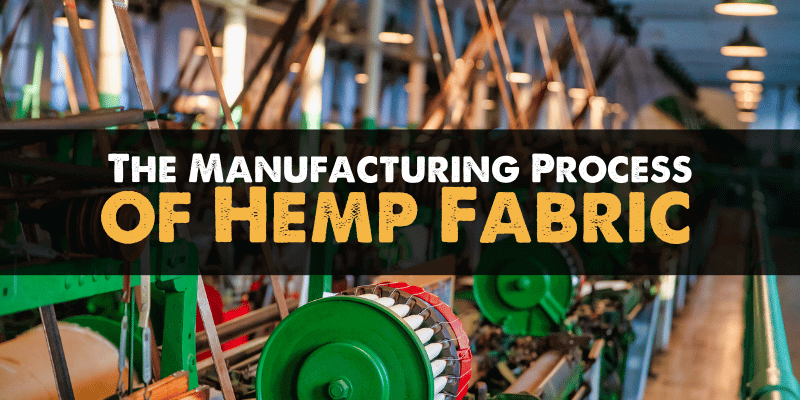
The Manufacturing Process of Hemp Fabric
The manufacturing process of hemp fabric is a fascinating journey that involves several key steps. To begin with, the optimal climate conditions for hemp cultivation play a crucial role in ensuring the quality and yield of the plants.
Once the hemp plants have reached maturity, they are harvested and undergo a retting process, which helps to separate the useful bast fibers from the woody core.
Following this, the fibers go through further processing techniques such as carding, cleaning, and refining to ensure they are ready for use.
Finally, the processed fibers are spun into yarn and woven into textiles, resulting in the creation of durable and versatile hemp fabrics.
Optimal climate conditions for hemp cultivation
Hemp Cultivation in Optimal Climate Conditions
Hemp cultivation thrives in spcific climate conditions that are ideal for its growth and development.
To ensure successful hemp cultivation, it is essential to consider the following factors:
- Temperature: Hemp plants prefer temperatures between 60°F and 85°F (15°C – 30°C) during the growing season. These temperature ranges provide optimal conditions for the plant’s growth and fiber production.
- Sunlight: Hemp requires ample sunlight exposure for healthy growth and higher fiber yields. It thrives in regions with long daylight hours, preferably around 12 to 14 hours of sunlight per day.
- Rainfall: Hemp plants require a moderate amount of rainfall, approximately 25-30 inches (64-76 cm), evenly distributed throughout the growing season. Excessive rainfall can lead to waterlogging and hinder plant growth.
- Soil Quality: Well-drained soil with pH levels ranging from 6 to 7 is considered ideal for hemp cultivation. The soil should be rich in organic matter, providing sufficient nutrients for the plant’s growth.
It is important to note that hemp can adapt to various climate conditions, making it a versatile crop that can be cultivated in different regions across the globe.
However, optimal climate conditions significantly contribute to maximizing hemp fiber quality and overall yield.
Considering these optimal climate conditions for hemp cultivation, it is crucial to select appropriate locations with favorable temperature ranges, sufficient sunlight exposure, moderate rainfall levels, and nutrient-rich soil.
By adhering to these guidelines, farmers can ensure successful hemp cultivation and achieve desirable fiber production.
Harvesting hemp plants and the retting process: Separating the wheat from the chaff, or in this case, the valuable fibers from the ganja-worthy leaves.
Harvesting hemp plants and the retting process
- Plant Cultivation: Hemp plants thrive in optimal climate conditions and are grown extensively for their versatile use in textile production. Farmers carefully cultivate these plants to ensure healthy growth and maximum fiber yield.
- Harvesting: Once the hemp plants reach maturity, they are carefully harvested to collect the stalks containing valuable bast fibers. This step requires precision to maximize fiber quality and quantity.
- Retting Process: After harvesting, the stalks undergo the retting process, where they are soaked in water or exposed to moisture and bacteria. This natural process helps break down the cellular structure of the stalks, allowing for easier separation of bast fibers from the woody core.
- Separation of Fibers: Once retted, the stalks are mechanically or manually processed to separate the bast fibers from the woody core or hurd. This separation is essential as it ensures that only high-quality fibers are used in textile production.
- Refining: The separated bast fibers then undergo further processing techniques such as carding, cleaning, and refining to eliminate impurities and prepare them for spinning into yarns. These refined fibers are then ready for weaving into textiles.
A true fact about harvesting hemp plants and the retting process is that hemp cultivation has seen growing global acceptance due to its sustainable nature and various industrial uses (source: ‘Unleashing the Potential of Hemp Fabric in Clothing’).
Parting ways with the woody core, hemp’s bast fibers take the spotlight in the textile production process – it’s like the plant’s own version of a break-up makeover.
Separating bast fibers from the woody core
The process of separating the strong and flexible bast fibers from the woody core of the hemp plant is crucial in textile production. Here’s a simplified guide on how this separation is achieved:
- Retting: The first step involves retting, which is the process of breaking down the pectin and lignin that hold the fibers together. This can be done through water retting, where the harvested hemp stalks are soaked in water for a period of time to allow natural fermentation. Alternatively, dew retting involves spreading the stalks on the ground and allowing moisture from the environment to break down the fibers.
- Breaking and Scutching: Once retted, the next step is breaking and scutching, where the dried stalks are mechanically crushed or beaten to break them into smaller pieces. This helps to separate the outer woody portion from the inner bast fibers.
- Hackling: After breaking and scutching, hackling is performed to further refine and separate the bast fibers from any remaining woody material. This involves combing or brushing the stalks using metal combs with sharp teeth, which helps remove any unwanted material while aligning and straightening the fibers.
- Heckling: The final step is heckling, which involves combing through the hackled fibers with finer combs to remove shorter or coarser fibers, resulting in long, smooth bast fibers ready for spinning into yarn.
By following these steps, manufacturers are able to successfully separate bast fibers from the woody core of hemp plants, harnessing their valuable properties for textile production.
It’s worth noting that these methods have been used for centuries and have stood the test of time as effective ways of separating bast fibers from hemp plants.
Turning spiky hemp stalks into soft and stylish clothing takes some serious carding, cleaning, and refining skills.
Further processing techniques: carding, cleaning, and refining
Carding, cleaning, and refining are essential techniques used in the further processing of hemp fabric. Through these methods, the fibers extracted from hemp stalks are prepared to be spun into yarn and woven into textile products.
- Carding: This technique involves combing the long hemp fibers to align them in a parallel fashion. It helps remove any remaining impurities and creates a more uniform texture, making it easier to spin the fibers into yarn.
- Cleaning: After carding, the hemp fibers go through a cleaning process to eliminate any remaining debris or foreign matter. This ensures that the fibers are clean and ready for further processing.
- Refining: The refining process focuses on improving the quality of the hemp fibers by eliminating any shorter or coarser strands. This step enhances the overall strength and smoothness of the fibers, resulting in high-quality yarns for weaving.
These techniques play a crucial role in preparing hemp fibers for textile production, ensuring that they are properly aligned, free from impurities, and of excellent quality.
Pro Tip: To ensure optimal results during carding, cleaning, and refining processes for hemp fabric production, it is recommended to use specialized machinery designed specifically for handling natural fibers like hemp.
This will help achieve consistent and high-quality results throughout the manufacturing process.
From plant to fabric, hemp proves it’s high time to spin a new thread in the fashion world!
Spinning yarn and weaving textiles from hemp fibers
-
- Hemp fibers are carefully extracted from the woody core of the plant through processes like retting, separating bast fibers, and refining.
-
- The extracted fibers are then carded and cleaned to remove any impurities, resulting in a more uniform texture for spinning.
-
- Spinning the hemp fibers into yarn involves twisting them together to create strong, durable strands suitable for weaving.
-
- The woven textiles made from hemp yarn exhibit exceptional strength, durability, breathability, moisture-wicking abilities, and resistance to shrinkage, pilling, mold, and mildew.
Furthermore, the sustainable production process involved in creating hemp fabric makes it an attractive choice for those seeking organic textiles.
With its diverse applications ranging from apparel such as t-shirts, dresses, hoodies, underwear, and socks to household textiles and innovative uses, hemp fabric is increasingly embraced by individuals and businesses aiming for sustainability in their clothing choices.
Pro Tip: When working with hemp fabric or garments made from it, ensure proper care by following the recommended washing instructions to maintain its quality and longevity.
From trendy tees to cozy undies, hemp fabric is the versatile eco-warrior of the fashion world.

Diverse Uses of Hemp Fabric
When it comes to the world of hemp fabric, the applications are diverse and exciting. From apparel to household textiles, the versatility of hemp never fails to impress.
In this section, we’ll dive into the fascinating ways in which hemp fabric has revolutionized the apparel industry.
We’ll explore how hemp has been used to create trendy t-shirts, dresses, hoodies, underwear, socks, and so much more.
Additionally, we’ll uncover the innovative uses of hemp in household textiles and other surprising areas. Prepare to be amazed by the endless possibilities of hemp fabric!
Apparel: T-shirts, dresses, hoodies, underwear, socks, and more
Apparel: T-shirts and More
T-shirts, dresses, hoodies, underwear, socks, and other fashionable items comprise the wide range of apparel made from hemp fabric.
These garments are not only stylish but also environmentally friendly.
-
- Hemp fabric is ideal for creating t-shirts due to its superior strength and durability compared to other textiles. The natural breathability and moisture-wicking abilities of hemp make it a perfect choice for hot climates.
-
- Dresses made from hemp fabric offer both style and sustainability. The fabric’s resistance to shrinkage, pilling, mold, and mildew ensures that these garments remain in excellent condition for longer periods.
-
- Hoodies crafted from hemp fabric are not only comfortable but also durable. The strong fibers of hemp ensure that these garments can withstand everyday wear without losing their shape or quality.
-
- Underwear and socks made from hemp fabric provide exceptional comfort and breathability. Hemp’s moisture-wicking properties help keep the skin dry and prevent discomfort caused by sweat buildup.
In addition to traditional apparel items, hemp fabric has also been utilized in innovative ways beyond clothing.
-
- Other household textiles such as bed sheets, tablecloths, curtains, and towels can be made from hemp fabric. These products offer the same benefits of strength, durability, breathability, and sustainability as their apparel counterparts.
-
- Hemp fabric is also increasingly being used in the creation of bags, accessories like hats and belts, upholstery materials for furniture, and even automotive interiors.
Hemp fabric’s reemergence in the fashion industry provides a sustainable alternative to traditional textiles while offering an array of stylish choices.
As more people recognize the versatile qualities of hemp clothing, its popularity continues to grow globally.
Fun Fact: Researchers have found that compared to cotton production, making apparel from hemp requires significantly less water usage.
Hemp fabric: Because your couch deserves to be as high as you are.
Household textiles and other innovative uses
Unleashing the Potential of Hemp Fabric in Household Textiles and Beyond ‘s versatility extends beyond clothing, with innovative uses in and other applications.
Sustainable and Durable for offers a sustainable alternative for due to its strength and durability. It can be used to make , , , and that are long-lasting and eco-friendly.
The Unique Benefits of in Other Innovative Uses Apart from, finds innovative uses in various industries.
Its mold and mildew resistance make it suitable for outdoor furniture and cushions.
Additionally, it is being explored as a material for eco-friendly packaging and even as an alternative to traditional building materials.
Suggestions for Incorporating in to capitalize on the benefits of in , manufacturers could consider creating a range of sustainable home furnishings that are both stylish and durable.
Furthermore, collaborating with designers and architects can help explore more innovative applications of in interior design.
Join the hemp revolution and shed the outdated stigma – it’s time to embrace the resurgence of!

Embracing the Resurgence of Hemp Fabric
As I delve into the current resurgence of hemp fabric, it becomes clear that breaking through misconceptions and stigma is an essential part of embracing this sustainable and versatile material.
The growing global acceptance and cultivation of industrial hemp is paving the way for innovative solutions in various industries.
Moreover, the expanding business opportunities for hemp fabric production are worth exploring.
Let’s dive deeper into these aspects and uncover the potential of hemp for clothing in today’s market.
Breaking through the misconception and stigma
As the perception surrounding hemp fabric begins to shift, there is a growing opportunity to dispel the misconceptions and stigma associated with it.
By educating consumers about the true nature of hemp fabric and its many benefits, we can pave the way for its acceptance in the fashion industry.
This involves highlighting its sustainable production methods, superior qualities such as strength and durability, as well as its resistance to shrinkage and pilling.
Moreover, it is crucial to differentiate hemp fabric from psychoactive marijuana, emphasizing that the textile is derived from fibers of the Cannabis sativa plant rather than its intoxicating counterpart.
By clarifying this distinction, we can address common misconceptions and open up new possibilities for using hemp fabric in clothing.
To further break through the misconception and stigma, it is important to showcase the diverse applications of hemp fabric beyond just apparel.
From household textiles to innovative uses in various industries, there is a wide range of opportunities for incorporating hemp fabric into our daily lives.
By highlighting these alternative uses, we can challenge preconceived notions and encourage individuals to consider hemp fabric as a viable option.
From reefer madness to fashion madness, industrial hemp is making a triumphant comeback in the global market.
Growing global acceptance and cultivation of industrial hemp
The widespread acceptance and cultivation of industrial hemp is rapidly increasing worldwide.
This versatile crop has garnered attention due to its numerous uses and sustainable production methods.
As the stigma surrounding hemp dissipates, more countries are embracing the benefits of cultivating this valuable plant.
Industrial hemp cultivation is gaining momentum globally as governments and individuals recognize its potential.
With advancements in technology and changing attitudes towards cannabis, the cultivation of industrial hemp is no longer seen as a taboo or illicit activity.
Instead, it is being viewed as a legitimate agricultural industry that offers economic opportunities and environmental benefits.
Countries around the world are gradually legalizing the cultivation of industrial hemp for various purposes such as fiber production, research, or even for CBD extraction.
This growing global acceptance signifies a shift in perception towards sustainable and eco-friendly alternatives in industries like textiles, construction, and automotive manufacturing.
The expansion of industrial hemp cultivation also presents new business opportunities for farmers and entrepreneurs.
As demand for hemp products increases, so does the need for reliable suppliers of high-quality hemp fiber or raw material.
This creates an avenue for collaboration among stakeholders within the industry, contributing to a thriving global market.
In Canada, for example, around 80 percent of legal cannabis cultivation licenses have been issued specifically for industrial hemp farming.
This has led to job creation and economic growth in rural areas where traditional agriculture may be declining.
Additionally, it has prompted investment in infrastructure for processing and manufacturing hemp-based products.
The growing acceptance and cultivation of industrial hemp worldwide signify a shift towards sustainable practices and eco-conscious choices
As more countries realize the potential benefits of this versatile plant, we can expect continued growth in the industry while simultaneously reducing our dependence on synthetic materials.
Join the booming hemp fabric industry and cultivate success with endless business opportunities.
Expanding business opportunities for hemp fabric production
Expanding the Scope of Hemp Fabric Production in the Business World
Hemp fabric production offers immense potential for expanding business opportunities in various industries.
With its superior qualities, such as strength, durability, and resistance to shrinkage, hemp fabric is increasingly becoming a preferred choice for clothing manufacturers and designers.
Additionally, its sustainable production methods make it an attractive option for environmentally conscious consumers.
As global acceptance and cultivation of industrial hemp continue to grow, entrepreneurs can seize this opportunity to enter the market and capitalize on the increasing demand for high-quality hemp fabric.
To tap into the expanding business opportunities for hemp fabric production, entrepreneurs should consider several key strategies. First, establishing collaborations with hemp farmers can ensure a consistent supply of raw materials.
By investing in research and development, businesses can also innovate and create new products that cater to specific consumer needs and preferences.
Moreover, forging partnerships with retailers or online platforms that specialize in sustainable fashion can help reach a wider target audience.
In order to differentiate themselves from competitors, businesses should focus on marketing their hemp fabric products as eco-friendly alternatives to traditional textiles.
Highlighting the durability and breathability of hemp fabric while emphasizing its organic origins can attract environmentally conscious consumers who are seeking sustainable clothing options.
Additionally, leveraging social media platforms and influencers can help generate brand awareness and create a buzz around hemp fabric products.
As more businesses venture into the realm of hemp fabric production, it is crucial to stay informed about industry trends and developments.
Attending trade shows and networking events focused on sustainability and textile innovations can provide valuable insights into market demands and consumer preferences.
By continuously adapting their strategies based on market feedback, businesses can secure a competitive edge in this growing industry.
Finding high-quality hemp fabric is no longer a needle in a haystack, thanks to these online retailers and UK-based sources.
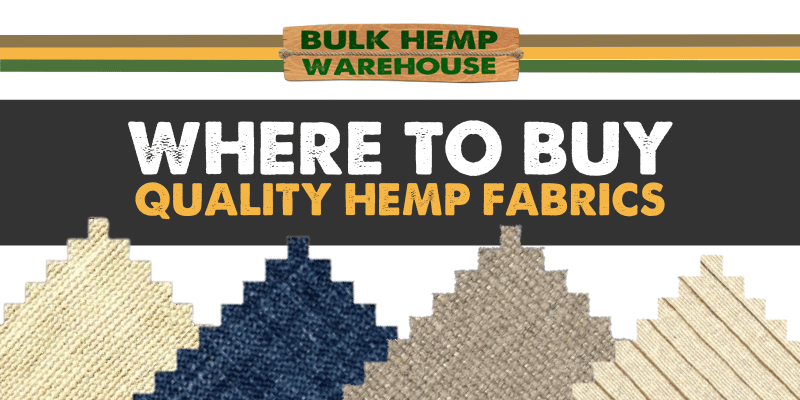
Where to Find High-Quality Hemp Fabric
When it comes to finding high-quality hemp fabric, there are numerous options available to cater to both international customers and those based in the USA.
Online retailers play a significant role in providing a wide variety of hemp fabric options to customers around the world.
From specialized fabric stores to larger e-commerce platforms like Bulk Hemp Warehouse, these online sources offer convenience and accessibility.
For those specifically located in the USA, there are also dedicated sources that focus on providing top-notch hemp fabric locally, although they can be hard to find.
With this diversity in options, individuals interested in hemp clothing can easily find the perfect fabric to suit their needs right here on Bulk Hemp Warehouse in our fabric product section.
Online retailers for international customers
In the digital era, a broad array of online platforms cater to global customers seeking hemp fabric.
These e-commerce destinations provide a convenient and accessible way for international buyers to explore and purchase high-quality hemp textiles.
-
- Distinctive Weaves: Online retailers showcase an extensive collection of hemp fabrics with diverse weaves, from plain weaves to twills and herringbones. Customers can select the weave that suits their preferences and project requirements.
-
- Sustainable Sourcing: These platforms prioritize sustainability by offering hemp fabrics that are responsibly sourced and produced. They partner with brands that adhere to ethical practices, ensuring environmentally friendly materials for customers worldwide.
-
- Customization Options: Online retailers for international customers also offer customization services, empowering individuals to create personalized designs using hemp fabric. This allows customers to express their unique style while supporting the growth of the hemp industry.
Beyond the aforementioned benefits, these online retailers often provide detailed product descriptions and customer reviews, enabling potential buyers to make informed decisions when purchasing hemp fabric online.
For those passionate about sustainable fashion or eager to explore the versatile qualities of hemp fabric, online retailers present a captivating range of options that cannot be missed.
Discover the latest trends in hemp textiles, access premium quality products from around the world, and join the global movement towards eco-conscious clothing choices now!
Looking for hemp fabric in the UK? Get ready to weave some serious style with these top sources for sustainable and durable clothing choices.
UK-based sources for hemp fabric
Online retailers: Many USA & European based online retailers specialize in eco-friendly fabrics and offer a selection of high-quality hemp fabric.
These websites provide detailed product descriptions and images to assist customers in choosing the most suitable hemp fabric for their needs.
Specialized boutiques: Some boutiques in the USA & UK focus specifically on sustainable and organic textiles, including hemp fabric.
These boutiques carefully curate their collections to ensure they meet strict sustainability criteria while showcasing the versatility and beauty of hemp textiles.
Sustainable fashion brands: Numerous USA-based & European sustainable fashion brands prioritize using environmentally friendly materials like hemp fabric in their designs.
These brands often have their own production facilities or collaborate with local manufacturers to produce clothing items made from high-quality hemp fabric.
In addition to these sources, it is worth noting that some USA-based universities and research institutions are exploring innovative techniques for manufacturing and processing hemp fiber.
This ongoing research aims to further improve the quality, sustainability, and affordability of hemp fabric, making it an even more appealing choice for consumers.
Historically, England played a significant role in the cultivation of flax (linen) fibers, which were widely used for textile production.
As consumer demand for sustainable alternatives grows, more USA & UK businesses are recognizing the potential of hemp as a versatile textile material with immense environmental benefits.
Hemp fabric: the sustainable and durable choice for fashion-forward individuals ready to unlock the full potential of their clothing.

Hemp for Clothing Conclusion
After delving into the amazing possibilities of hemp fabric in the fashion industry and exploring its sustainable and durable aspects, it is clear that the full potential of hemp as a clothing material is yet to be fully unlocked.
As I’ve discovered from my research, hemp fabric offers a range of benefits that can revolutionize the way we think about clothing.
From its superior breathability to its resistance against mold and UV rays, hemp fabric presents compelling advantages that fashion industry should not overlook.
Additionally, embracing sustainability and durability in our clothing choices is not just a trend, but a necessity for a better future.
By incorporating hemp fabric into our wardrobes, we have the power to make significant strides towards a more eco-friendly and long-lasting fashion industry.
Unlocking the full potential of hemp fabric in the fashion industry
Hemp fabric holds immense untapped potential within the fashion industry.
With its superior qualities such as strength, durability, and breathability, it offers a sustainable alternative to conventional textiles.
The origins and evolution of hemp fabric demonstrate its versatility and differentiation from psychoactive marijuana.
By embracing the resurgence of hemp fabric and breaking through misconceptions, we can unlock its full potential in the global market.
Additionally, expanding business opportunities for hemp fabric production will contribute to a more sustainable and durable clothing industry.
Harnessing the benefits of hemp fabric in fashion will not only revolutionize clothing choices but also promote environmental consciousness and address the growing demand for sustainable textiles.
Pro Tip: To find high-quality hemp fabric, explore online retailers catering to international customers or seek out UK-based sources known for their reliable supply.
Embracing sustainability and durability in clothing choices
The fashion industry is now embracing sustainability and durability in clothing choices.
Consumers are becoming more conscious of the environmental impact of their clothing and are seeking durable and eco-friendly options.
Hemp fabric has emerged as a viable solution, offering strength, breathability, and resistance to shrinkage, pilling, mold, and mildew.
It is produced sustainably and has the potential for organic production.
With the growing global acceptance and cultivation of industrial hemp, there are expanding business opportunities for hemp fabric production.
Online retailers and UK-based sources offer high-quality hemp fabric for consumers looking to embrace sustainability in their clothing choices.
Hemp fabric provides a way to embrace sustainability and durability in clothing choices. It offers numerous benefits such as strength, breathability, resistance to shrinkage, pilling, mold, and mildew.
Moreover, it can be produced sustainably with the potential for organic production.
As the fashion industry seeks more eco-friendly options, hemp fabric emerges as a solution that meets both the demand for sustainable practices and durable clothing.
In addition to its superior qualities of durability and sustainability, hemp fabric offers a unique history that adds to its appeal in clothing choices.
The origins of hemp fabric date back centuries as it has been used for textile production around the world.
Its versatility in various cultures demonstrates its timeless value as a textile made from fibers of the Cannabis sativa plant.
Overall, embracing sustainability and durability in clothing choices can be achieved through the use of hemp fabric.
Its strength, breathability, resistance to shrinkage and other factors make it an ideal choice for conscious consumers seeking environmentally friendly options.
As global acceptance and cultivation of industrial hemp increase, so do the business opportunities for hemp fabric production.
Whether purchased from online retailers or UK-based sources that specialize in high-quality hemp fabric, consumers have access to an expanding market that enables them to fully embrace sustainability in their clothing choices while enjoying durable garments with unique historical significance.
Five Facts About Hemp for Clothing:
-
- ✅ Hemp fabric is made from the fibers of the Cannabis sativa plant. (Source: Team Research)
-
- ✅ Hemp fabric is highly breathable and has excellent moisture-wicking abilities, making it ideal for hot climates. (Source: Team Research)
-
- ✅ Hemp fabric is incredibly durable and can last longer than cotton fabric. (Source: Team Research)
-
- ✅ Hemp fabric is resistant to pilling and retains its shape well. (Source: Team Research)
-
- ✅ Hemp fabric can be used to make various clothing items, such as T-shirts, dresses, hoodies, underwear, socks, and more. (Source: Team Research)
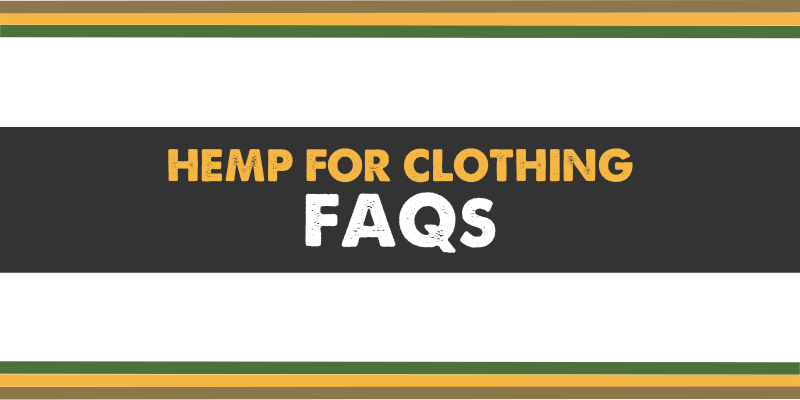
FAQs about Hemp For Clothing
Hemp clothing refers to textiles made from fibers derived from the stalks of the Cannabis sativa plant.
It is a durable and breathable fabric that has been used for centuries in various types of apparel.
No, hemp clothing is not susceptible to shrinkage.
Its fibers are strong and do not easily distort or shrink, making it a reliable choice for long-lasting garments.
Hemp is cultivated and harvested, and the outer layer of bast fibers is separated from the inner woody pith.
These fibers are then processed and spun into yarn, which is woven to create hemp fabric. The fabric can be used in the manufacturing of various clothing items.
Hemp material offers numerous benefits for clothing.
It is highly durable, resistant to pilling, and softer than cotton.
It is lightweight, breathable, and moisture-wicking, making it suitable for both hot and cold climates.
Additionally, hemp fabric is resistant to mold, mildew, and microbes, making it a hygienic choice.
OTHER EDUCATIONAL HEMP POSTS
Explore Other Posts by Bulk Hemp Warehouse

Why Hemp Seeds Are the Ultimate Superfood for Birds – And Why Corn, Wheat, and Soy Don’t Belong in Their Diet
Could hemp seeds be the NEW Bird Feed that beats corn wheat and soy? I think so.

How China Grows and Processes Hemp Fiber – From an American Farmer
Steve Groff, a third-generation farmer from Southeastern Pennsylvania, recently embarked on a transformative journey to China, a trip that has profoundly impacted his perspective on the future of hemp farming and textile production. This wasn’t a casual tourist visit; it

10 Ways to Use Hemp for the Holidays
The holiday season is a time for creativity, warmth, and celebration. Hemp, with its versatility and sustainable nature, offers endless opportunities to make your holiday festivities more eco-friendly and unique. Whether you’re looking for gift ideas, decorations, or a way







